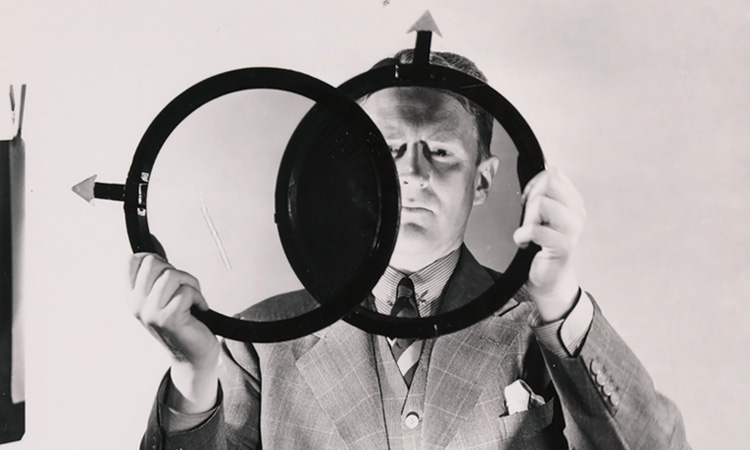Light Touch
Putting Polarization to Work
Leveraging polarization direction has enabled wide-ranging applications, from glare reduction to 3D movies.

Polaroid cofounder George W. Wheelwright III demonstrates Polaroid polarizing lenses, circa 1930s. [Polaroid Corporation Records. Baker Library, Harvard Business School]
The first polarized glasses appear to have been made in 1849 by Alexander Bryson of Edinburgh, Scotland. The prisms he used, invented just 20 years before, would have been a bit bulky but provided a relatively large aperture and worked for all visible wavelengths. Bryson constructed his glasses with the transmission direction vertical, so that they would eliminate glare from most of the sunlight reflected from horizontal surfaces. He particularly wanted to allow the user to see through the surface of water. Since then, scientists and inventors have taken advantage of polarization direction for a variety of applications.
…Log in or become a member to view the full text of this article.
This article may be available for purchase via the search at Optica Publishing Group.
Optica Members get the full text of Optics & Photonics News, plus a variety of other member benefits.

